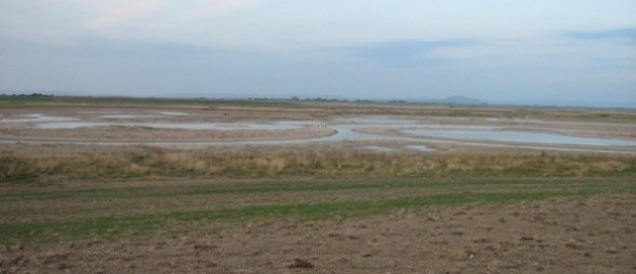All our woods are soggy, but holding up well to the winds. Treragin, however, has seen around a dozen Southern Beech blow over, with a couple seeming to lean with each new band of gales, no doubt their root plates partly loosened by the very wet ground. I think I’ll wait to a general improvement in the weather before undertaking some clearance work – firewood for a couple of year’s time anyway!
While I have now been out three times unblocking drains in the village road, we have come off very lightly compared with some of the coastal towns and the Somerset Levels. I grew up in Somerset, and the level of flooding in the last two years is certainly well in excess of anything in living memory. But I have also found myself shouting at the radio and talking to the television, as I have become frustrated by the relative lack of knowledge exposed, especially by the politicians. Eric Pickles and Ian Liddell-Grainger have been particularly offensive and very quick to blame others.
I made a quick list this morning of factors contributing to the floods, and came up with eleven:
1. More rain, climate change or not. But rainfall in Somerset, though high, is not at record levels.
2. More run off in the upper catchment from changing agriculture. More intensive farming and land drainage, and increased arable cropping leads to faster run-off, exaggerating high river flows.
3. More run off in the catchment from urban development. In a similar way to agriculture, more paving and more drains lead to much faster transfer of heavy rainfall into the lower catchment.
4. Late switching on of the existing pumps on the Levels: the Somerset levels are actively pumped in the winter, and there is control on to start pumping. Water levels can be reduced in the autumn, to create additional storage in preparation for the wet winter months. This is possibly the first thing where the Environment Agency has a case to answer.
5. More housing built in the flood plains, and indeed sometimes against Environment Agency advice.
6. Very local flood protection works. Even where schemes have specific flood defences, their effect is often to just pass the problem on further downstream.
7. More soil erosion blocking the rivers – this is back to changing farming practices. Maize crops are a particular culprit, as the fields are generally bare soil in the winter, have increased by over 100 fold in the last forty years.
8. Less dredging of the main rivers – the Parrett and Tone. Estimated channel capacity is only 65% of designed capacity, with dredging stopped in the 1990s. Yes, it is part of the problem, but only part.
9. Wetland habitat creation has had a very small effect. Wetland nature reserves have been developed on the Somerset levels, with the RSPB at Sedgemoor and Somerset Wildlife Trust and Natural England at Catcott and Shapwick Heaths. However, these are only returning the land to a less intensive system of farming that was once much more widespread, and have a very small effect on the flood storage capacity.
10. Less money to the Environment Agency – 25% cut in 2010 spending review and a further 10% in 2013. Flood defence spending has been protected more than some things within that, but the cuts are nevertheless very significant, and a very real factor in the previous decision to stop dredging.
11. Treasury rules concerning return on investment in flood defences require eight times benefit to get the go ahead. Lord Smith, Chairman of the Environment Agency has been claiming today that the Treasury’s own rules on returns on investment have limited the Environment Agency’s contribution to dredging on the Levels to £400,000.
When the dust settles, there is a range of ecologically friendly ways of helping mitigate the problems.
• In coastal areas, managed retreat is a familiar term, and Steart Point at the Parrett estuary is an example. Here improved flood defences have been built a bit inland, with the “abandoned area being landscaped to provide a bird reserve. (This is the project that was unfairly labelled “birds before people”). I visited the site last year with the Institute for Ecology and Environmental Management; it was great to see some large scale positive habitat creation.
• Uplands can be rewetted; Dartmoor and Exmoor bogs make excellent sponges that soak up and then slowly release rainwater. South West water are helping to promote a series of these schemes through its Upstream Thinking Project.
• Tree planting can be similarly helpful; indeed a study of the River Parrett catchment was undertaken as far back as 2003.
• Sustainable urban drainage is becoming moiré fashionable ; this includes green roofs, porous parking areas, and very local areas that can act as balancing ponds to store storm water on a short term basis. A good example is the village of Cambourne in Cambridgeshire, where all the drainage has been designed into wildlife friendly urban green spaces.
• We need to take climate change seriously. We need more renewable energies and more energy conservation. Which brings me back to among other things, woodland – renewable, sustainable, carbon neutral firewood! Or to be more controversial a few more wind turbines………
Stephen





